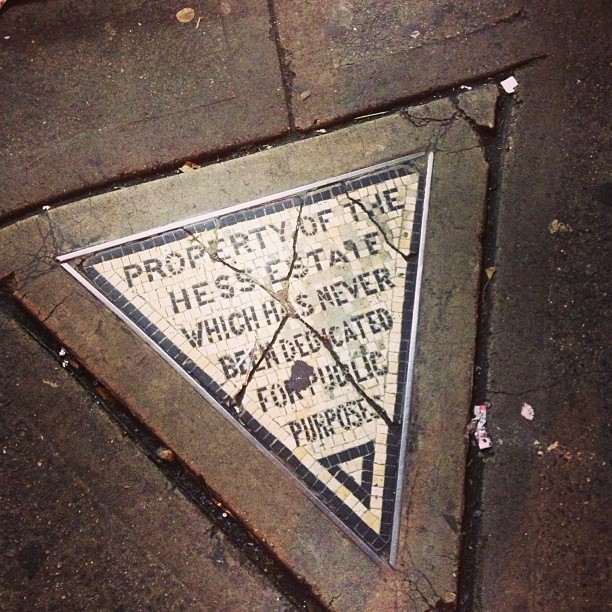New York City is full of unusual plots of land left over from various construction projects, but none as small and emblematic as the Hess Triangle, a private property barely larger than a pizza slice.
The story of the Hess Triangle began in 1910 when the city of New York claimed eminent domain in order to expropriate and demolish 253 buildings, including the Voorhis, a 5-storey apartment building owned by David Hess. The businessman and his family fought the decision, but by 1913, they had exhausted all legal options and had to watch their property be demolished. However, in 1928, while checking property papers, Hess’s heirs discovered that the city had neglected to seize a tiny corned of Plot 55, and quickly filed a notice of possession for it. That’s how the Hess Triangle, the smallest piece of real estate in NYC came to be.

Photo: Chris Hamby/Flickr
Measuring only 0.0000797113 acres, the Hess Triangle is barely larger than a big slice of pizza. It would also be invisible to the naked eye, if not for the black and white mosaic decorating it, which reads “Property of the Hess Estate, which has never been dedicated for public purposes.”
Soon after being legally claimed by the Hess Estate, the city of New York actually had the gall to ask the family to donate the small plot to the public, but they decided to hold on to it as a symbol of resistance and defiance.
“It’s the little guy fighting city hall,” said Andrew Berman, executive director of the Greenwich Village Society for Historic Preservation.
In 1938, the Hess Triangle was sold to the adjacent Village Cigars store, for $1,000. That may not sound like a lot, but considering the size of the plot, and inflation, the tiny piece of property would be worth about $17,000 in today’s money. That’s $68,000 per square meter, which actually makes the Hess Triangle not only the smallest, but one of the most expensive pieces of private property in New York City.
Some sources claim that the Hess Triangle is still owned by Village Cigars, but according to Wikipedia, it was sold to Yashiva University, which in turn sold it to 70 Christopher Realty Corporation, in 1995. All owners chose to keep the iconic mosaic intact.






